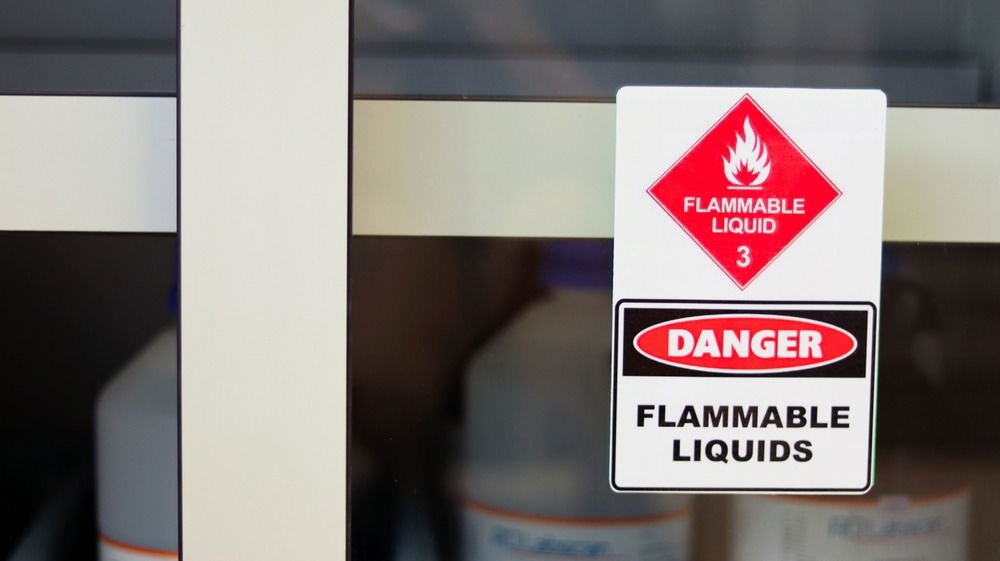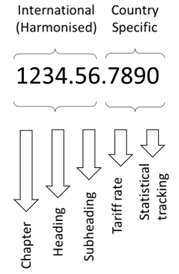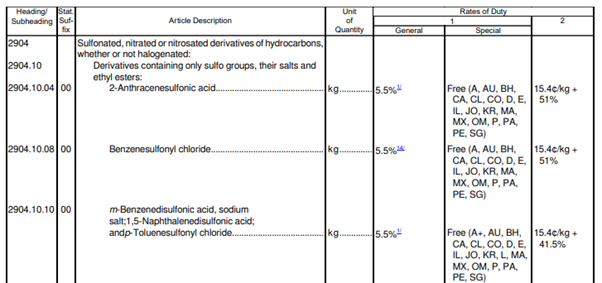A Harmonized System (HS) code is a standardized identifier that is assigned to an item when it is shipped internationally. It is used to describe and classify the object and is necessary to determine the import duties and customs tariffs that must be paid.

Image Credit: ShutterStock/Arpon Pongkasetkam
The HS code is usually a 10-digit number when shipping chemical products internationally.
The World Customs Organization (WCO) governs the rules for determining HS codes, which are used to assist national customs and statistical agencies in classifying commodities.
Although the first six digits of the HS code are harmonized globally, the remaining four digits, as well as the actual rate of duty, may vary from country to country. This allows regional customs authorities to track, regulate and tax different chemical products to differing levels.
For example, the Harmonized Tariff Schedule governs the rates for imported chemicals into the United States. The HS code is also referred to as a Commodity Code for Chemicals in Europe.
- A HS code is assigned to an item based on its characteristics
- A HS code is mandatory for the import/export of any item
- For chemical products, the HS code is primarily determined by the chemical structure and properties
- The HS code is used to calculate the import duty that must be paid

Image Credit: Scitegrity
HS codes for chemicals
The WCO Harmonized system is divided into different chapters, each containing hundreds of pages of information. Chemicals and chemical products are listed under Section VI of the harmonized system, referred to as “Products of the Chemical or Allied Industries,” and include 11 chapters, numbered 28 to 38.
Most individual chemicals are classified under Chapter 28 (Inorganic) and Chapter 29 (Organic), while specific mixtures, polymers, and some chemicals with specific uses (such as photographic, dyes, and resins) are included in other chapters.
There is also a Pharmaceutical appendix that lists thousands of drugs and a separate chemical appendix specific to the United States.
The full list of chapters is as follows:
- Chapter 28 Inorganic chemicals, organic or inorganic compounds of precious metals, rare-earth metals, radioactive elements, or isotopes
- Chapter 29 Organic chemicals
- Plus the Pharmaceutical appendix, which is should often be considered when assessing Chapter 29, especially if known drugs or medicines are to be shipped.
- Chapter 30 Pharmaceutical products
- Chapter 31 Fertilizers
- Chapter 32 Tanning or dyeing extracts, tannins and their derivatives, dyes, pigments, and other coloring matter, paints and varnishes, putty and other mastics, inks
- Chapter 33 Essential oils and resinoids, perfumery, cosmetic or toilet preparations
- Chapter 34 Soap, organic surface-active agents, washing preparations, lubricating preparations, artificial waxes, prepared waxes, polishing or scouring preparations, candles, and similar articles, modeling pastes, “dental waxes” and dental preparations with a basis of plaster
- Chapter 35 Albuminoidal substances, modified starches, glues, enzymes
- Chapter 36 Explosives, pyrotechnic products, matches, pyrophoric alloys, certain combustible preparations
- Chapter 37 Photographic or cinematographic goods
- Chapter 38 Miscellaneous chemical products
How to generate an HS code for chemicals
To determine the HS code for an item, the first step is to find the harmonized system in use for the import destination country (in the EU, the HS code is harmonized at the EU level).
Then, based on the item’s “essential character,” the appropriate chapter should be identified. For example, if the item is a developing fluid for photos, an explosive, or a dye, the relevant chapter should be consulted to see if it fits within that category.
According to US Customs and Border Patrol, the essential character of an item is defined as:
“the attribute which strongly marks and serves to distinguish what an article is- that which is indispensable to the structure, core, or condition of the article.”
Individual chemicals may belong to either Chapter 28 (Inorganic Chemicals) or Chapter 29 (Organic Chemicals).
The basis for classification in these chapters is the chemical structure, categorizing the chemicals based on their class and functional groups. Certain named chemicals within a class may also possess their own HS code.
An illustration from Chapter 29 is presented below.

Image Credit: Scitegrity
Determining the most relevant and specific HS code for a chemical requires the knowledge and expertise of a chemist.
To find the HS code, it is recommended to start from the end of each chapter and work backward until a subheading is found that fits the chemical. If it fits into multiple subheadings, use the one with the highest numerical HS code.
Before starting the process, it is crucial to read the chapter notes at the beginning of each chapter and heading, as they contain valuable information, clarifications, and definitions.
For a chemist trained in HS coding, this task typically takes between 15 to 30 minutes per chemical.
If the user does not have the required chemical knowledge, they can use Scitegritys ExpediChem’s HS coding system. This system allows the user to generate the correct HS code based on the chemical’s structure or name lookup.

Image Credit: Scitegrity
About Scitegrity
Want to know if your chemical is controlled, regulated, has the potential for abuse or just need a tariff code?
Our regulatory and chemistry experts encode chemical regulations from around the world allowing you to simply answer these questions and more by drawing or looking up a chemical structure.
We make regulatory compliance a simple, robust, background process. Join with 5 of the worlds top 10 pharma, chemical suppliers, regulators, CROs, forensics labs and more who trust and rely on our solutions.
Scitegrity was founded in 2011 by ex-Pfizer, GSK and Roche chemists and data scientists with the goal of making compliance to chemical regulations are far more robust, accurate and automatic.
By automatically checking all the chemicals an organisation has at the structure level, it allows enterprise wide automatic compliance checks against hundreds of regulations globally, even for novel and proprietary chemical collection running into millions of chemicals.